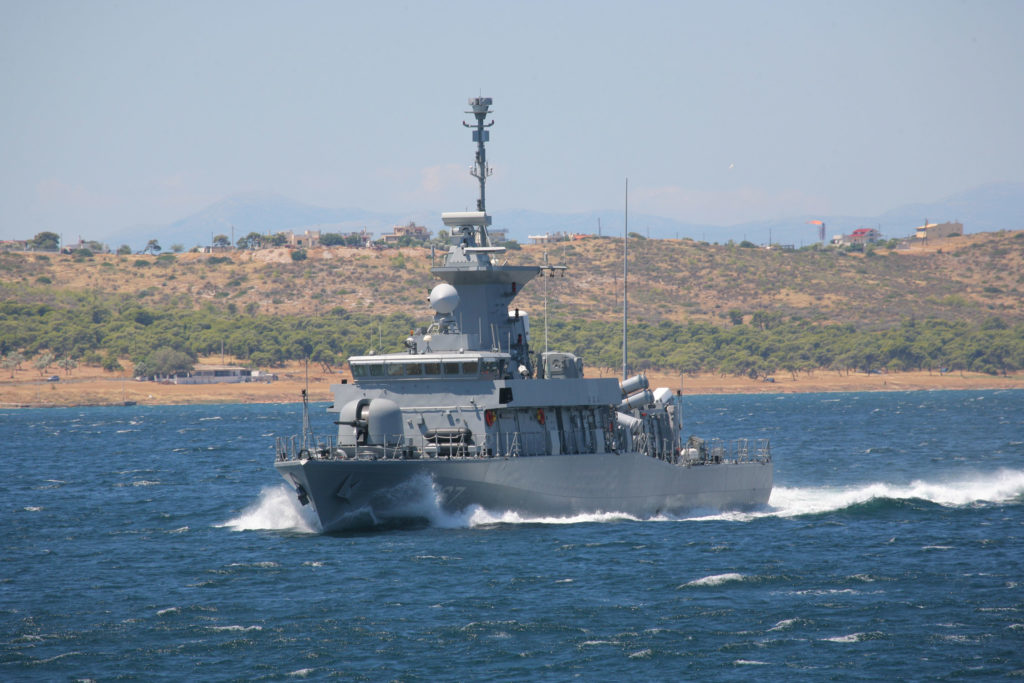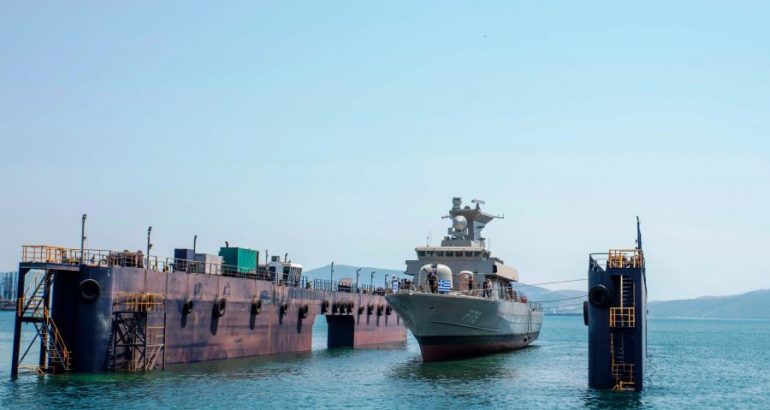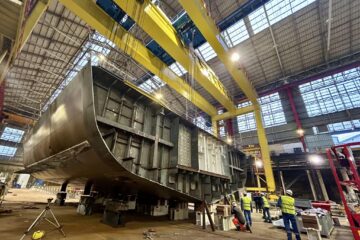The launch ceremony of the HS Ypoploiarchos Vlachakos (P79) was attended by the Greek Ministers of National Defense and Development & Investments.
Today, a ship is being launched that the Hellenic Navy is in dire need of to strengthen its ranks. A few days ago, the 6th FACM was named and commissioned. Today, the 7th is launched and we begin to see the completion of this ship at the end of the road. This is not the end or the beginning of the end for “Elefsis Shipyards”. Rather, I would say, it is the end of the beginning. An attempt has been made for several months to change the ownership status. Investment initiatives are always welcome, as long as they are done with the right conditions, with the appropriate procedures and always in the light with the working staff who have the right to be more anxious than everyone, more than us and everyone, that this is for a better future. I think these conditions have been met.
The Minister of National Defense Mr. Nikolaos Panagiotopoulos addressed the following speech:
The Hellenic Navy commissioned the 6th Roussen-class FACM last week. The Greek minister in his speech probably made reference to the Themistocles Corvette, a project in which Greece’s Onex is cooperating with Israel’s Israeli Shipyards. Onex acquired Elefsis Shipyards recently. The Greek defense ministry has been pushing recently to bolster the navy via a number of programs amid growing tensions with its neighbor, Turkey. A major procurement program with France for two frigates did not materialize however.
About Hellenic Navy Roussen-class troubled program

For the record, the Hellenic Navy’s Super Vita program has complex history and spans across many years.
A contract for the construction of three modern missile boats was signed in January 2000. The construction took place at the Elefsis Shipyards, while Vosper Thornycroft (now BAE Systems Maritime) provided the design, logistical support and equipment for the ships. On August, 2003 and September, 2008 options that provided the acquisition of four more vessels were activated with the last ship to be commissioned in 2015.
On September 25, 2008, a 299 million Euro contract was signed between the Greek State and the Elefsis Shipyards for the construction of the two remaining vessels of the class, P-78 and P-79. In the meantime Elefsis was still building some of the remaining vessels According to the contract, the delivery times of the two FACs were 46 months from the start of the contract for the first ship and 52 months for the second.
Due to serious financial problems of the shipyards and the Greek state, as well as a conflict of opinion with BAE Systems, there has been a 10 year delay in the construction of the two ships. When the Elefsis shipyard went bankrupt, the Hellenic navy took over the production line and the salaries of the shipyard workers to finish the construction of the last two ships of the class: The Navy was the manager and it was using the infrastructure and the personnel of the shipyards.
About Roussen-class FACM

The Roussen-class FACM are based a stretched variant of the successful Vita design in used with the navies of Qatar and Oman.
They have a length of 62 meters, a of beam 9.5 meters, a draft of 2.6 meters for a full load displacement of 668 tons. They have a crew of 45 sailors and a maximum speed of 35 knots.
In terms of weapon systems, these FACM are quitted heavily armed for their size: A 76mm main gun, 8x MM40 Block 2 & 3 anti-ship missiles, a RAM surface-to-air missiles launcher and 2x 30mm guns.
First ship of the class P 67 Ypoploiarchos Roussen was launched in November 2002 and commissioned in December 2005. Last ship of the class, P 79 will likely be launched next year. The name of the 6th and 7th vessels are yet to be official announced.
They are fitted with early 2000s sensors and systems (MW08 3D G-band surveillance radar, Mirador EO sensor, Scout MkII radar and Tacticos combat management system all from Thales).






